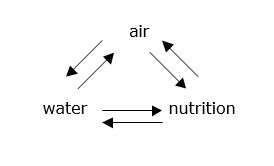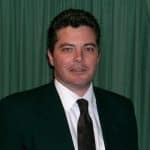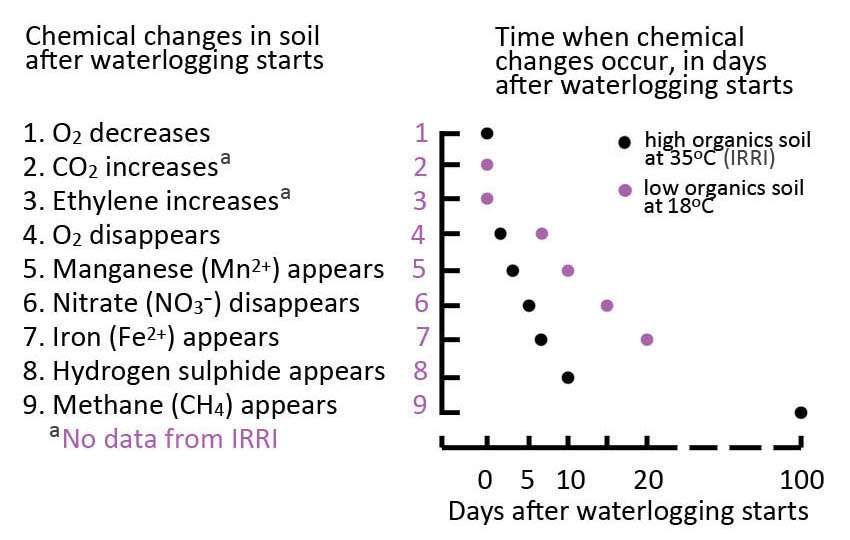The Science Behind Soil Aeration.
This blog discusses the science behind soil aeration and what happens with a compacted lawn? You may also find our soil aeration case study and our flood management blog of interest.
Turf roots grow in small air pockets within the soil and in a compacted soil, these air pockets disappear. Soil aeration is caused by mechanical manipulation and modification of the soil and one of the main limiting factors to achieving optimal turf growth is a lack of aeration. Soil aeration aims to achieve three things:
- Renew soil structure;
- Aid in the management of organic matter and lastly
- Allow gas exchange. Turf roots require oxygen to respire. In poorly aerated soils, there is not enough oxygen and roots struggle as they can’t breathe properly.
Allowing gas exchange through soil aeration is probably the least discussed benefit of this process but is seldom mentioned in the turf industry.
What indicates soil compaction?
- Poor water infiltration;
- Turf diseases like Pythium sp;
- The presence of certain indicator weeds like Knotweed or Summer grass;
- A limited root system;
- Sour-smelling soil;
- Iron oxidation (red deposits) seen along root pathways;
- Surface water after rainfall or irrigation and
- Turf that tends to rapidly wilt under dry conditions.
Soil texture, soil aggregation, and bulk density all affect the amount of pore space and hence soil aeration.
The Science Behind Soil Aeration – Oxygen
With a compacted lawn, soil roots water, nutrients, and oxygen become limiting. All growing media are composed of a constantly changing environment. Nutrient movement and gaseous exchange, are always occurring.
Consequently, any factor that impacts these processes will severely affect the growth of turf.
The finer the soil, the more likley you will have a compacted lawn. This leaves less space for oxygen and when denied oxygen, neither turf nor aerobic soil microorganisms can survive.
After flooding for example there are several chemical and soil physical processes that occur and emphasise the importance of aeration.

Soil equilibrium
This soil balance can be affected in a compacted lawn. For example, poor soil aeration or oxygen deficiency is a major factor that limits seedling growth. Soil oxygen deficiency:
- Limits root growth;
- Reduces respiratory capacity;
- Limits carbohydrate accumulation and hormone synthesis and
- Limits water and nutrient uptake. Reductions of up to 55% in Potassium uptake can occur in poorly aerated soil.
In the soil, several biological processes occur. The majority of these are aerobic, and involve the uptake of oxygen and the production of carbon-containing compounds. Plant roots respire aerobically and so need sufficient oxygen at root surfaces. In fact, estimates are that roots and soil microbes require 5-24 g of oxygen/m2/day. Oxygen deficiency in the soil occurs because of:
- Soil compaction;
- Poor rootzone quality. This is the case in heavy fine-textured soils or layered soils with inadequate drainage and
- Excessive irrigation, rainfall, or flooding.
As discussed later, waterlogging is detrimental to soil aeration. After downpours, floods, or too much irrigation, water fills up the soil’s pore space, displaces the air and reduces the oxygen level to nearly zero.
The Science Behind Soil Aeration – Anaerobic Soil Conditions
Anaerobic conditions in the soil cause a series of both chemical and biochemical reactions. These include:
- A build-up of carbon dioxide;
- Denitrification (the processes by which nitrate is reduced to nitrite, then to nitrous oxide, and then to elemental nitrogen);
- Manganese reduction;
- Iron reduction;
- Sulphate reduction and
- The production of toxic compounds such as ferrous sulphide and ethylene.
This build-up of carbon dioxide in anaerobic conditions results in:
- Excessive watering;
- Increases in levels of some microbial activity and
- Root dieback.
How the soil atmosphere relates to soil aeration
In the atmosphere oxygen, carbon dioxide, and nitrogen comprise 21%, 0.03%, and 79% respectively. These percentages can vary in the soil. Oxygen is less than 20%, carbon dioxide is up to 10- 100 times higher and there is about the same amount of nitrogen. The amount of air present in the soil is influenced by soil texture. Sandy soils contain 25% or more. In loam soils 15 – 20% and in high clay soils it can fall below 10% of the total soil volume.
In fine-textured soils structure also plays a major role. Strongly aggregated soils with macroaggregates of the order of 5mm or more in diameter, generally have a considerable volume of macroscopic pores. These drain very quickly and remain air-filled most of the time. These soils exhibit an air capacity of 20-30%. As the aggregates are dispersed or broken down by mechanical forces, these pores tend to disappear. A strongly compacted soil can have less than 5% air by volume.
Soil Oxygen
In the turf rootzone, there is not a great reserve of oxygen in the soil. For example, in the top 1 metre of a compacted lawn, there is a 3-4 day supply of oxygen present in soil pore space. Therefore, respiratory processes need to replenish oxygen and remove waste products.
The processes by which oxygen moves into the soil are the same as those for carbon dioxide removal. The oxygen moves from the atmosphere into the soil and moves by mass flow, diffusion, or in water. The rate by which soil oxygen exchanges with the atmosphere is the oxygen diffusion rate (ODR) and this influences the levels of carbon dioxide present. A low ODR results in increases in carbon dioxide.
Mass flow occurs when a pressure gradient exists. This involves the bulk flow of gas in a particular direction. This process can account for 5-10% of oxygen consumed in the soil. The gusting of wind can lead to sudden pressure increases at the soil surface and so small gusts can enter into the soil. Because it is localized, and short term, this only effects the top 2-3 cm.
The water solubility of oxygen is 0.028 cm3 of oxygen in a cm3 of water. This may be important in stimulating a flush of activity but it is a tiny contribution to the transport process.
By far the greatest movement occurs by way of diffusion involving a concentration gradient. This process that enables oxygen to get down to depth. So given that a concentration difference exists, this means that there is a tendency for gas molecules to move from high to low concentrations.
Flooding
Soil flooding limits O2 movement into soils, and so roots experience hypoxia (sub-optimal O2) and anoxia (absence of O2). Coupled with slow diffusion, the low water solubility of oxygen has a major negative impact on turf growth.
One litre of air contains approximately 33x more O2 than one litre of water at 20 °C. This restricts gas exchange when soil is waterlogged, and causes oxygen levels to fall rapidly.
At the same time high levels of CO2 to occur in the root zone and toxins form. These all impact root metabolism, nutrient acquisition, and growth of roots and shoots.
The image below shows what chemical changes occur over time in waterlogged soil and how organic matter and temperature also play a role.
When turf is submerged excessive growth occurs. This is due to the accumulation of the ethylene. Submerged plants tend to elongate which is a response to maintain air contact until the floodwaters are too deep.
Ethylene also triggers a loss of chlorophyll, leaf yellowing, the degradation of proteins, and the recycling of young tissues. This means leaves are less fit for photosynthesis once flood waters fall away.
So, in order to give flooded turf the best possible chance of recovery, it is important to maintain carbohydrate reserves.
Improving soil aeration
Thus it can be seen that soil aeration is extremely important to optimize the growth of plants. Often poor growth is an indirect result of its effects on gaseous exchange, nutrient availability, and drainage. Aeration is not just necessary in areas subjected to heavy traffic and it should be a regular maintenance operation over an entire site. Bear in mind the average walking human applies a ground pressure of 60–80 kPa, whilst a galloping horse will exert up to 3.5 MPa.
How To Improve Gas Exchange in a Compacted Lawn?
There are several options to carry out regular aeration on a compacted lawn. Core aerification, vertidraining, and hollow or solid tine aeration help to maintain desirable root-zone properties and aid gas exchange in the turf root zone. Also contrary to the general perception, core aeration does not have a negative impact on pre-emergent herbicides.
However, all of these can cause surface disruption. Consequently, air injection is increasing in popularity. This works by tines penetrating the soil, and then injecting bursts of air. Claims made include an increase in infiltration and drainage and a reduction in soil compaction.
This is all with minimal surface disruption. Does the research support these claims?
Trial work
1987 work on trees (i know its not the same but the principles are) looked at the soil physical affects of pneumatic subsoil loosening.
- Reductions in soil bulk density;
- Increases in saturated hydraulic conductivity;
- Increases in larger soil pore space and
- In sandy soils positive soil physical changes may occur.
2017 work in the USA into new and traditional cultivation methods. Soil Air injection results in the least reduction of green turfgrass cover, no ball roll reduction from the control, and lower reduction in surface firmness in comparison to other methods tested. Hollow tine aeration has the greatest reduction in green turfgrass cover, lowest ball roll distance, and greatest reductions in surface firmness.
A UK four-month study in 2017 at the STRI, saw three trial plots set up to examine the effects of the SISIS Javelin Aer-Aid with air injection. The conclusion was that the “The SISIS Javelin Aer-Aid was effective in reducing compaction,”
A 2021 study looked at the effects of air and sand injection on soil’s physical properties. The conclusion is that the incorporation of air-injection cultivation with hollow-tine cultivation shows promise for improving infiltration rates over hollow-tine cultivation alone.
Air Injection for Compaction Relief.
There are currently two options on the Australian market and both can be used on a compated lawn . The Sisis Javelin Aer-Aid is sold by JT Turf and the Air2G2 is sold by Sustainable machinery. So, how do these stack up?
From all reports, both do a pretty good job. As I see it, they both have their place in the marketplace. Currently, the Air2G2 appears to be more widely available as it was the first onto the market. The soon-to-be-launched Sisis Javelin Aer-Aid allows the injection of liquids through the tines and therefore will be a game changer in the turf industry.
Potential issues
As with most things these are not suitable to use everywhere.
- You need the right soil moisture content to get the best results from any soil aeration program. If the soil is saturated you won’t get fracturing and any benefits will at best be shortlived.
- Likewise, dry sand doesn’t work well either as the air blast just passes through the sand without causing any movement.
- Care should be taken if you regularly aerate and use pre emergent herbicides. However, evidence does show that there is no significant impact of carrying our regular aeration.
- Lastly, they will not work well if the soil is too shallow.
- If you have limited access these may not be practical on a compacted lawn.
Sisis Javelin Aer-aid | Campey Air2G2 | |
Power | Tractor PTO | Self propelled |
Number of tines | 10 | 3 |
Depth of penetration cm | 12.7 | 30 |
Tine spacing mm | 75 | |
Working width cm | 150 | 180 |
©, 2022, Gilba Solutions, All rights reserved.

Jerry Spencer
Graduated from Newcastle University with an Hons Degree in Soil Science in 1988, Jerry then worked for the Sports Turf Research Institute (STRI) as a turf agronomist before emigrating to Australia in 1993.
He followed this by gaining a Grad Dip in Business Management from UTS. He has worked in a number of management roles for companies as diverse as Samsung Australia, Arthur Yates and Paton Fertilizers.
He has always had a strong affinity with the Australian sports turf industry and as a result he established Gilba Solutions as an independent sports turf consultancy in 1993. Jerry has written over 100 articles and two books on a wide range of topics such as Turf Pesticides and Nutrition which have been published in Australia and overseas.


